Arabica Coffee Bean Origin Story description of flavor and taste characteristics of coffee varieties
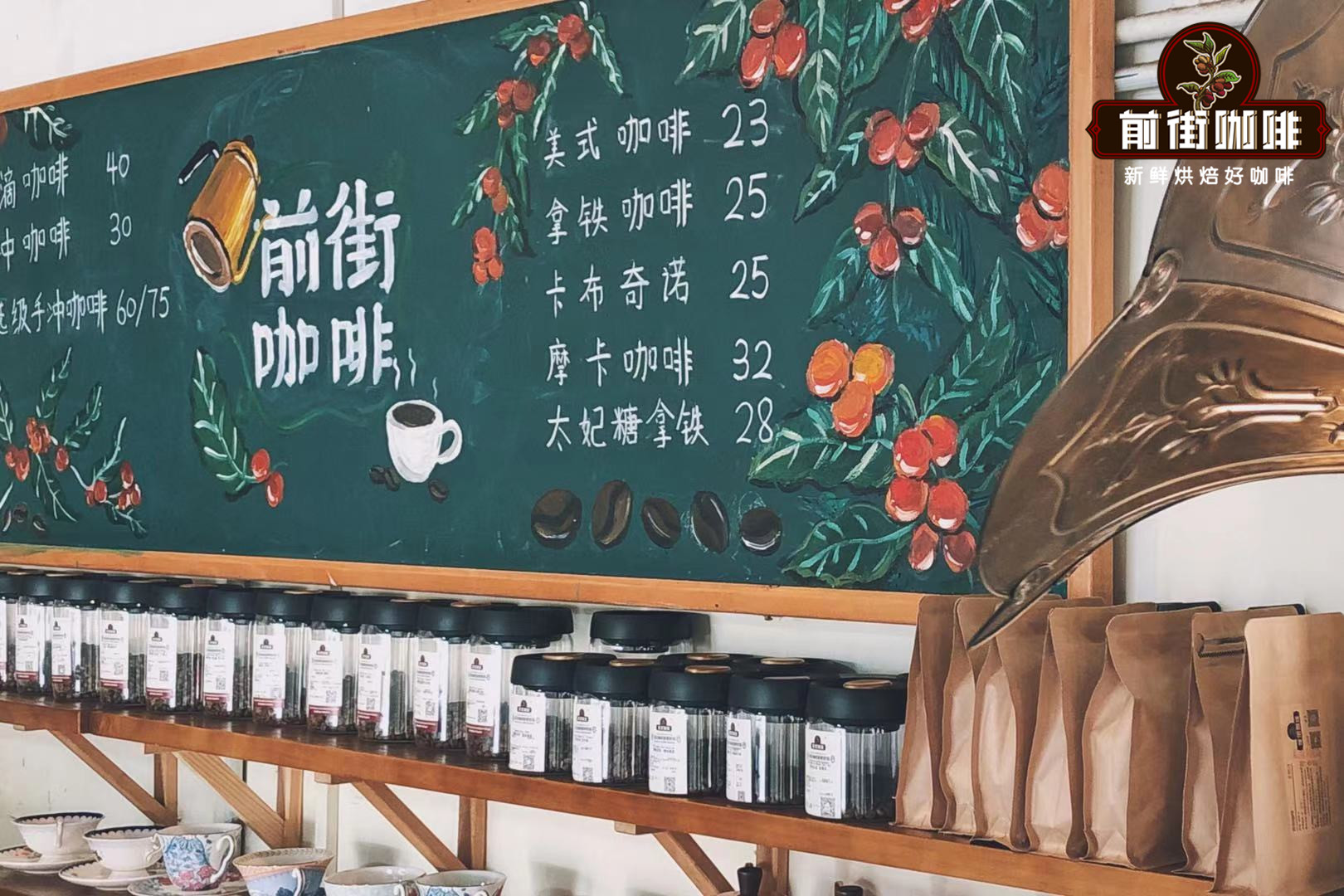
Professional coffee knowledge exchange more coffee bean information please follow the coffee workshop (Wechat official account cafe_style)
Coffee fans who often come to Qianjie coffee shop all know that the main varieties of individual coffee are Arabica varieties, or the hybrids of Arabica and Robusta. Generally speaking, pure Robusta coffee beans can only be used to make Italian coffee beans, so what is the advantage of Arabica coffee beans in flavor? In this next article, Qianjie Coffee will give coffee fans a chance to popularize Arabica coffee beans.
What are Arabica coffee beans?
At present, there are three major varieties of coffee beans in the world, namely, Arabica, Robusta and Liberika, among which Arabica has the best flavor, so it is used to make boutique coffee. At the same time, its caffeine content is only 0.8%, 1.5%. It is also the most important variety of coffee beans in the world. Arabica coffee beans are produced in Central and South America, Africa, Asia and so on.

And according to Qianjie, because Arabica coffee beans have the best flavor, they account for 75% of the world's coffee production, and Robusta accounts for about 20% of the world's coffee production. Liberian cards account for only 2% of the total.
Although Arabica coffee beans seem to have advantages everywhere, in fact, Arabica coffee beans are very delicate and can only be grown at high altitude. although they can withstand low temperatures but not frost, Arabica coffee beans are not strong in drought and are vulnerable to diseases and insect pests. for example, the "rust" of coffee trees made coffee farmers miserable, which led to the later development of the hybrid of Arabica and Robusta. And Arabica is only a general term for a variety. For example, the common coffee varieties in Qianjie coffee shops are in fact secondary varieties derived from Arabica, such as iron pickup, bourbon, Kaddura and so on are all pure Arabica coffee beans.

The difference between Arabica and Robusta varieties of coffee beans
Forestreet Coffee also mentioned Robusta coffee beans, so what's the difference between Robusta and Arabica coffee beans?
According to Qianjie Coffee, it is known that Robusta coffee trees are easy to feed and do not have high requirements for altitude. They can be planted in areas below 1000m, with strong resistance to diseases and insect pests and high yield, but their caffeine content is 2.7%, 4%, twice that of Arabica, and because caffeine, as a natural pesticide in plants, can be protected from most insects.
But it also means that the richness of the flavor of robusta coffee will also decline, and according to the front street coffee, Robusta has high levels of caffeine, amino acids and chlorogenic acid, which is the source of bitter taste. so Robsta was born without the elegant aroma of Arabica beans.
Through the cup test of robusta coffee beans, Qianjie coffee found that its flavor is more mellow and lower than that of Arabica coffee, as well as walnut, peanut, hazelnut, wheat, grain and other flavors, even with pungent earthy and rubber flavors. So Robusta coffee beans are not suitable for drinking as individual coffee, but they can increase the mellow thickness of Italian coffee, so there are still many producing areas willing to grow it.

The above is the knowledge about Arabica coffee beans organized by Qianjie Coffee. Next, Qianjie Coffee will introduce the subspecies of Arabica coffee beans and the coffee beans that cross with Robusta.
Common Arabica derived subspecies
Ethiopian Heirloom native species
This variety mainly refers to the coffee varieties in Ethiopia, and Ethiopia, as the birthplace of coffee beans, has recorded nearly 2000 coffee varieties, and there are tens of thousands of coffee varieties that have not been excavated. It is precisely because the number of varieties is amazing, on the one hand, it is difficult to identify and classify, on the other hand, the Ethiopian government is not willing to disclose the information of these varieties for the sake of protection. Therefore, it is collectively called "Heirloom" native species.
At present, like the most famous coffee beans in Qianjie Coffee Shop, Heirloom native coffee beans are used.
Front Street Coffee Essex Ding Ding Coffee beans
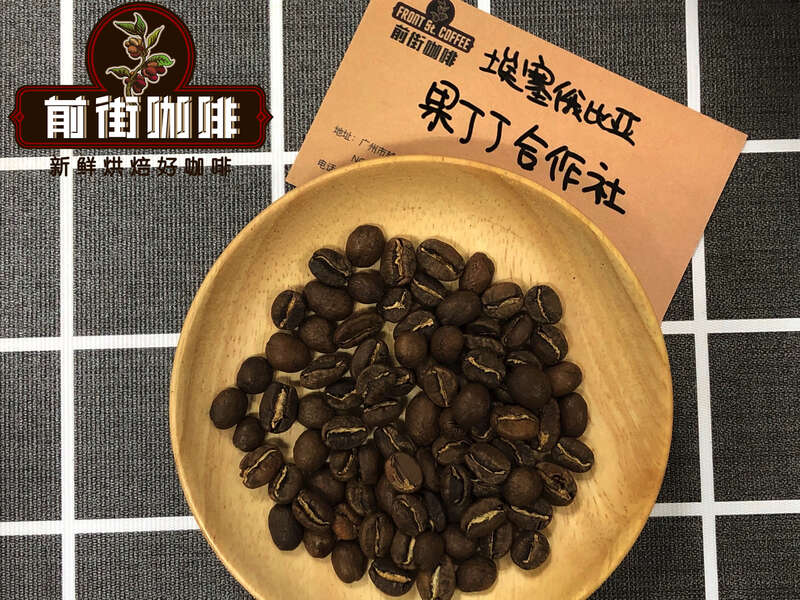
Country: Ethiopia
Producing area: Yega Xuefei
Altitude: 1900-2300m
Variety: native species
Treatment: washing treatment
Flavors: tropical fruits, cream, honey, berries, citrus
Rose summer
It is now generally believed that the best rose summer is produced in Panama, but the rose summer variety was actually found in the rose summer forest of Ethiopia as early as 1931 and sent to the Coffee Institute in Kenya. it was then introduced to Uganda and Tanzania in 1936 and Costa Rica in 1953. Panama only began to grow rosy summer coffee in the 1970s.
Qianjie Coffee believes that coffee fans are no stranger to Rose Summer Coffee, especially the Panamanian Emerald Manor Rose Summer in Qianjie Coffee Shop.
Qianjie Coffee Panamanian Emerald Manor Red Standard Rose Summer Coffee beans

Country: Panama
Producing area: Pocket (Emerald Manor)
Altitude: 1700 m
Variety: Rose summer
Treatment: sun treatment
Flavor: citrus, compound fruit, rose tea, honey
Iron pickup
Iron pickup is the oldest native variety in Ethiopia, and almost all the coffee varieties to which Arabica belongs are derived from iron pickup. Iron pickup has an elegant flavor, but its physique is weak, its disease resistance is low, and it is easy to be infected with leaf rust. Therefore, the output of coffee beans is low, and there is no way to achieve economic benefits. In recent years, iron cards in Central and South America have been gradually replaced by Kaddura and Kaduai. So the figure of the iron pickup is becoming more and more rare. Although the flavor of the iron pickup is elegant, it is not as popular as bourbon. Qianjie Coffee has set up a coffee farm in Baoshan, Yunnan Province, which mainly grows tin card varieties of coffee trees.

Tin card varieties of coffee beans can often be seen in Qianjie coffee shops, such as Indonesia's Mantenin coffee beans and Blue Mountain coffee beans, which are the most popular coffee beans in Qianjie coffee shops.
Front Street Coffee Indonesia Lin Dong Manning Coffee beans

Country: Indonesia
Producing area: Sumatra (Lindong)
Altitude: 1100-1600m
Variety: iron pickup, Kaddura
Treatment method: wet planing method
Flavor: baked toast, nuts, caramel, pine, herbs
Front Street Coffee Jamaica washed Blue Mountain No. 1 coffee beans
Country: Jamaica
Producing area: blue Mountain (Clifton Manor)
Altitude: 1310m
Variety: iron pickup
Treatment: washing treatment
Flavor: sweet brown sugar and sour berries on the palate, with nutty cocoa in the middle and back, creamy and layered, with walnut aromas in the finish.
Bourbon
Bourbon is the second species of the iron pickup mutant, which belongs to the oldest existing coffee variety, and the green fruit will appear bright red when it is ripe. Compared with the tin card species, the bourbon species has wider leaves and denser growth. although the seed setting is higher than the tin card, the harvest time is also 2 years, which is also a variety with less yield, but it has a high-quality taste, like the sour taste of red wine, and the aftertaste is sweet.

This variety is mainly grown in Brazilian coffee producing areas, such as the Brazilian Queen's Manor coffee beans in the front street coffee shop use this variety of coffee beans.
Front Street Coffee Queen of Brazil Coffee beans
Country: Brazil
Producing area: Sao Paulo State (Queen's Manor)
Altitude: 1400-1950m
Variety: yellow bourbon
Treatment method: half sun / sun exposure
Flavor: nuts, cream, peanuts, fermented fruit, sucrose
Kaddura
Kaddura, a single gene variant of bourbon, was found in Brazil in 1937. It has better production capacity and disease resistance than bourbon, and the tree is shorter and easy to harvest. Unfortunately, like bourbon, it has the periodic problem of production capacity fluctuation every two years. But its flavor is comparable to or slightly worse than bourbon beans, more importantly, it is super adaptable, it does not need shade trees, and it can also be vibrant in direct exposure to the sun. it is commonly known as exposure coffee, which can adapt to high-density planting, but it must be fertilized more and increase the cost. therefore, the acceptance of coffee farmers is not high in the initial stage.
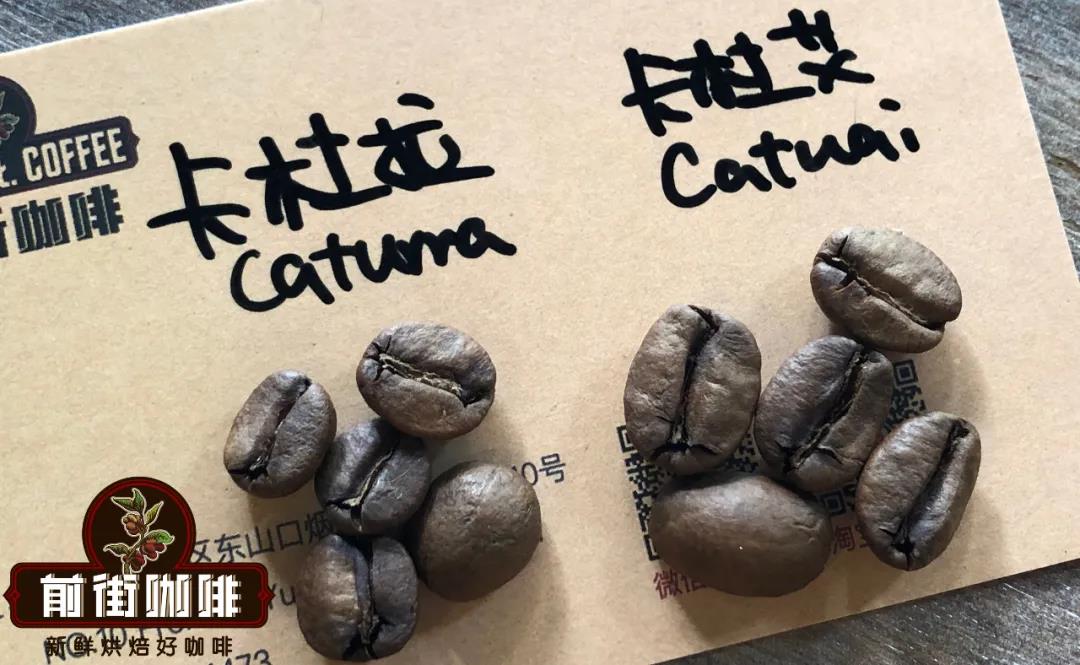
At present, this variety is mainly grown in Latin America, such as the Costa Rican coffee beans in the front street coffee shop. Most of the coffee beans are Kaddura varieties.
Costa Rican Bach coffee beans in front of the street

Country: Costa Rica
Producing area: Tarazhu
Altitude: 1950m
Variety: Kaddura
Treatment: raisin honey treatment
Flavor: fermented wine, berry fruit and tea notes
Kaduai
Kaduai is an Arabica hybrid. It is a subspecies of the Robsta variety, Mondo Novo (New World) and Kaddura. It has a good ability to resist natural disasters, especially wind and rain. It inherits the advantages of Kaddura's low stature and modifies Mondonowood's shortcomings. Another advantage is that the result is solid, and it is not easy to fall off when the strong wind blows, which makes up for the weakness of Arabica fruit, but the overall flavor is more monotonous than Kaddura, monotonous and less mellow, which is the greatest pity. In addition, the fruit growth and harvest life is only about ten years, and the short life span is also one of the weaknesses.
At present, this variety is mainly grown in Latin America, such as Qianjie coffee. Most of the coffee beans in Costa Rica are also made from this variety of coffee beans.
Front Street Coffee Costa Rican musicians Beethoven Coffee beans

Country: Costa Rica
Producing area: Tarazhu
Altitude: 1800-1950 m
Variety: Kaddura, Kaduai
Treatment: washing treatment
Flavor: light fermented wine with citrus and berry floral aromas
This Beethoven coffee bean is the only coffee bean in the musician series treated with water, so it will be cleaner and brighter in flavor, with citrus aromas.
Pacas
Pacas is a natural variety of bourbon, first discovered in 1949 on the estate of the Pacas family. In 1956, some plants with different shapes were found in the bourbon planting area, collected and started breeding research, and William Cogwill, a professor at the University of Florida, was invited to identify them. Identification found that there was a single gene mutation in bourbon planted in Pacas Farm, which caused the plant to become smaller and became a new variety. The new variety is named "Pacas" after the farmer. And Pacas coffee plants are smaller, can be planted more closely, and have higher yields than native bourbon. High-density planting also brings higher yields to farms and performs better in flavor.

This variety of coffee is also mainly grown in Latin America, such as Pacas, one of the three varieties of coffee beans used by Shirley, Honduras, in the front street coffee shop.
Front street coffee Honduras Shirley coffee beans
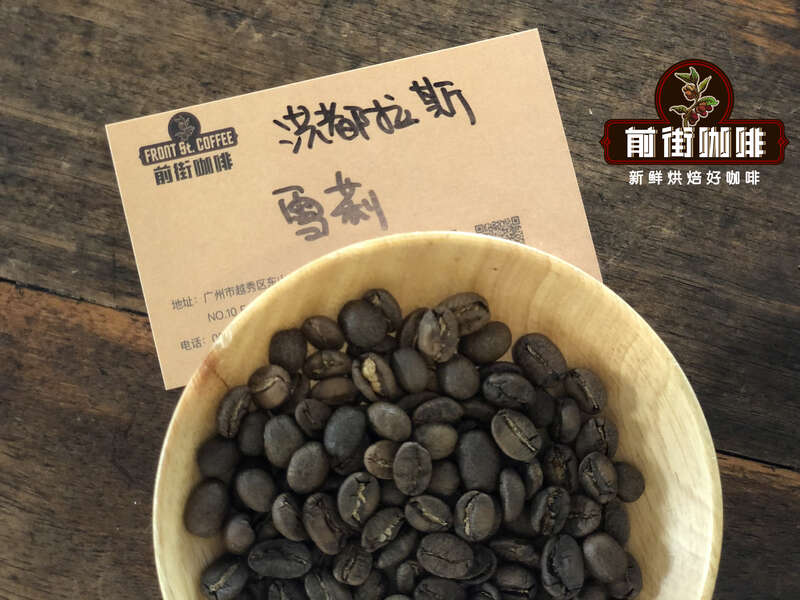
Country: Honduras
Producing area: Masaguara (Moca Manor)
Altitude: 1500-1700m
Variety: Kaddura, Kaduai, Pacas
Treatment: fine washing + whisky barrel fermentation
Flavor: vanilla, cream, fermented wine, dark chocolate
SL34,SL28
SL28 is a single variety selected from the drought-resistant population of Tanganyika in 1935. SL28 varieties are suitable for middle and high altitude areas and have the ability of drought resistance, but they are very sensitive to the main diseases of coffee. The appearance of SL28 bean is similar to that of bourbon variety, and it is round and thick. In recent years, genetic tests have confirmed that SL28 belongs to the bourbon gene group.

SL34 was first selected at the Scott Agricultural Laboratory in Kenya in the late 1930s. SL34 was selected from a tree in the Kabete Loresho property in Kenya, which is called the "French missionary". The appearance of SL34 beans is similar to that of iron card varieties, and the beans close to the shape of iron card beans are screened from Kenyan beans in the front street. The beans are long and oval in shape and look flat on the side. In recent years, genetic tests have shown that SL34 is related to the genome of iron pickup.
At present, these two varieties are only grown in Kenyan coffee producing areas, such as the coffee beans used by Asalia in Kenya, which is in the front street coffee shop.
Front street coffee Kenya Azaria coffee beans

Country: Kenya
Production area: Asali (Honey processing Plant)
Altitude: 1550-1750m
Variety: SL28,SL34
Treatment method: 72 hours washing treatment
Flavor: Sydney, black plum, brown sugar, virgin fruit, Brin
Arabica and Robusta coffee bean hybrid
Katim.
Katim is a hybrid of Tim and Kaddura, a subspecies of Robusta. It was first developed in 1959 and was popularized in Brazil in the 1970s and 1980s. With disease resistance and high yield, it occupies a place in Central and South American coffee varieties. The occasional outbreak of coffee leaf rust crisis in Central and South America has also contributed to Katim's use of coffee beans.
It is characterized by high yield, short plants, dense planting and reddish-brown new leaves. However, due to the rapid maturity and high yield, adequate fertilizer supply and shade must be required, but according to Qianjie, its life is very short, with an average of only ten years.

As mentioned above in Qianjie Coffee, Mantenin, the latest gold produced by Indonesia's pwn Company, is this variety of coffee beans, followed by the famous Yunnan small-grain coffee beans in the Yunnan producing area of China, that is, the Katim variety of coffee beans.
Qianjie Coffee Indonesia Gold Manning Coffee beans

Country: Indonesia
Producing area: Mount Aceh Jiayu, Sumatra
Altitude: 1100-1600m
Variety: Ateng
Treatment method: wet planing method
Flavor: baked toast, nuts, pine, caramel, herbs
Qianjie Coffee Yunnan small Coffee beans (rations beans)
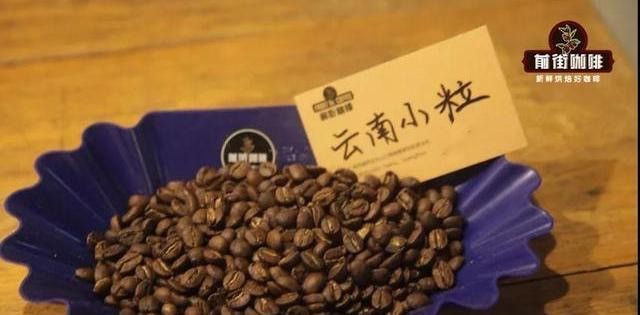
Country: China
Producing area: Baoshan, Yunnan
Altitude: 1200m
Variety: Katim
Treatment: washing treatment
Flavor: herbs, nutty, chocolate, caramel
Castillo
Castillo is a coffee variety developed by Columbia Coffee Research Institute in 2005 to enhance plant disease resistance. It is currently the main cultivated variety in Colombia.
According to Qianjie, Castillo is the result of five generations of cross breeding between Tim and Kaddura, a subspecies of Robusta, while Tim is the result of a natural hybrid between Arabica and Robsta, with tall plants and resistance to leaf rust. Kaddura is the result of natural mutation of bourbon species. The plant is short and the yield is higher than that of tin pickup and bourbon. It inherits the high quality flavor of bourbon, the distance between plants is small, and the plants per unit area are denser. Susceptible to leaf rust.

The Columbia San Jose Manor in the front street coffee shop is this kind of coffee bean, which has an obvious sense of tea in terms of flavor.
Front Street Coffee Columbia San Jose Manor Coffee beans

Country: Colombia
Producing area: Caldas
Altitude: 1750m
Variety: Castillo
Treatment method: refined water washing rum barrel fermentation treatment
Flavor: rum, wine heart chocolate, tropical fruit, maple syrup
The above Qianjie Coffee is about the flavor of Arabica coffee beans. At the same time, Qianjie Coffee hopes that this article will help coffee fans know more about Arabica coffee beans, so that they can better choose coffee beans that suit their own flavor in the future.
For more boutique coffee beans, please add private Qianjie coffee on Wechat. WeChat account: kaixinguoguo0925
Important Notice :
前街咖啡 FrontStreet Coffee has moved to new addredd:
FrontStreet Coffee Address: 315,Donghua East Road,GuangZhou
Tel:020 38364473
- Prev

Grinding and roasting treatment of Kahayang Gan Manor in Indonesia, one of the best coffee producers in the world
Low-acidity coffee is described as: good Java coffee has this property, it shows a relatively thick, slightly lighter and less acidic than some other Indonesian coffee. This coffee shows a rustic style and a long aftertaste on the whole, with a slight flicker of vegetation in the aftertaste. Compared with other Indonesian coffee, the aftertaste is not that long.
- Next

A brief introduction to the history and culture of the origin and development of Arabica coffee in Indonesia
Even if the coffee has the same name (named from the place of origin), as long as the cultivated varieties are different, the flavor is different from the leaf rust-resistant varieties found in the African Congo, teaching the Arabica species to be more resistant to the disease. People like to compare robusta species with Arabica coffee. In fact, robusta species is originally a mutant of Congo species (scientific name Cofffea canephora), so it is said that
Related
- Does Rose Summer choose Blue, Green or Red? Detailed explanation of Rose Summer Coffee plots and Classification in Panamanian Jade Manor
- What is the difference between the origin, producing area, processing plant, cooperative and manor of coffee beans?
- How fine does the espresso powder fit? how to grind the espresso?
- Sca coffee roasting degree color card coffee roasting degree 8 roasting color values what do you mean?
- The practice of lattes: how to make lattes at home
- Introduction to Indonesian Fine Coffee beans-- Java Coffee producing area of Indonesian Arabica Coffee
- How much will the flavor of light and medium roasted rose summer be expressed? What baking level is rose summer suitable for?
- Introduction to the characteristics of washing, sun-drying or wet-planing coffee commonly used in Mantenin, Indonesia
- Price characteristics of Arabica Coffee Bean Starbucks introduction to Manning Coffee Bean Taste producing area Variety Manor
- What is the authentic Yega flavor? What are the flavor characteristics of the really excellent Yejasuffi coffee beans?

